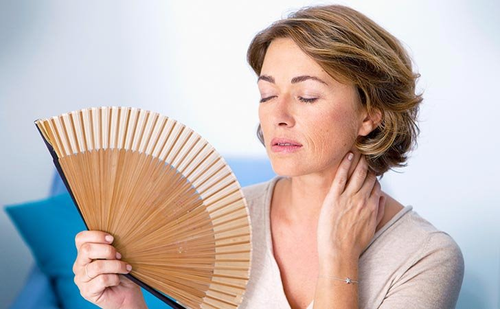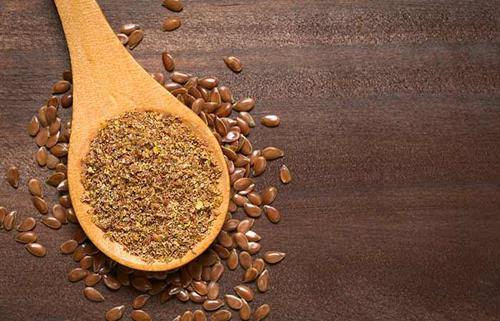How to Get Rid of Hot Flashes
Life comprises transitions, and one of the stages women go through is menopause which is connected to body changes. Some of the common signs of menopause are the occurrence of hot flushes and sweating at night. Hot flashes can be defined as feelings of extreme heat in the body that is not caused by any external source such as warmth from the sun. Hot flashes can strike you without notice while on other cases you might feel them coming. Once you experience hot flashes you might sweat in the upper parts of the body, the face might become hot, heart beats faster, and the fingers might tingle. One of the major causes of hot flashes is hormonal (declining estrogen levels) changes especially during menopause, and severity differs from individuals. Health problems such as diabetes, obesity and metabolic syndrome in some cases are known to make hot flashes worse.

Dealing with Hot Flashes at Home
Sensations that result from hot flashes are not pleasing to any woman because they make them uncomfortable, hot and red in some body parts. In most women, hot flashes can be experienced for many years after their onset of menopause, and it is therefore in the heart of every woman to learn how to deal with hot flashes appropriately. Some home remedies to help with hot flushes will help you create a balance in the body and the mind during the mind once menopause sets in as discussed below:
1. Apple cider vinegar
Using raw and unfiltered vinegar made from fermented juice of apples helps in the regulation of toxins which the body could try to get rid of through sweating. By doing this, the seriousness of hot flushes is lowered because apple cider vinegar has anti-inflammatory properties which can help in the reduction of the severity of hot flushes. You can prepare the apple cider vinegar by adding one tablespoon of it into a glass of water, stir it well to mix and then drink the resulting solution for about two times a day.
2. Increase the intake of vitamins
Vitamin C contains bioflavonoids which help in the reduction of the frequency at which hot flashes occur. In addition, Vitamin E comprises antioxidants which play a huge role in the decrease in hot flashes symptoms. To relieve yourself from hot flashes, it is advisable to eat foods rich in Vitamin E and C.
3. Stay cool
The slightest increase in temperature can trigger hot flashes, and it is, therefore, essential to avoid exposure to direct sunlight and other activities that can raise your temperature. Lower temperatures of your room using an air conditioner, a fan or a cooling gel pad. If you cannot afford air conditioning pieces of equipment, you can maintain cool temperatures by ensuring that the room is well ventilated, drinking cold water and avoiding clothing that traps body heat such as T-shirt in summer.
4. Exercise regularly
Taking at least thirty minutes dedicated for exercises on a daily basis helps in keeping your body in good shape and healthy. A healthy body makes it possible to keep your hormones in balance which goes a long way in the prevention of hot flashes. Some forms of aerobic exercises that you can take include walking, swimming, jogging or biking for a few times one week.
5. Eat black cohosh
Black cohosh is a plant of medicinal value that is used in the treatment of hot flashes and any other symptoms related to menopause. Black cohosh has been found to be as effective as pharmaceutical estrogen in the provision of relief to hot flashes in women by preventing excessive sweating. However, despite its medicinal value, if taken excessively it might have some side effects such as upsetting the stomach and might damage the liver.
6. Have flaxseed oil
Flaxseed oil contains fatty acids useful in the reduction of symptoms that are associated with menopause such as hot flashes. Flaxseed oil is composed of plant lignans which serve the same purpose with estrogen, and therefore it helps in improving the stability of women in menopause reducing the frequency of hot flashes.

7. Control your stress levels
Stress is one of the conditions that trigger hot flashes and therefore if you address your stress level you will have cut down on hot flashes. Hot flashes can be experienced at any time, but there are times when they frequently occur, such as when you are stressed and depressed. Large numbers of women have reported that they have they experience lots of hot flashes during the time of stress. If you can reduce stress, you will be in a position of lowering the frequency at which hot flashes strike. Some of the techniques you can adapt to lower your stress level include reading novels, yoga, massage, singing out loudly, walking and meditation, The not intensive exercises will help you relax your body as well as the mind, though a little increase in your body temperature.
8. Avoid triggers
Hot flashes are hormonal changes that can be triggered by some factors in the body such as the use of alcohol, spicy foods, tobacco, caffeine and alcohol among others. The main reason why these substances cause hot flashes is the fact that they have the potential of raising body acidity and the level of heat in the body.
Medical Treatments for Hot Flashes
Natural remedies are useful in the treatment of hot flashes, but there is no medical proof on how safe and effective the medications are. It is good to give the home-based therapy a try, but if hot flashes persist, you should consult a doctor. Medical treatment is better because their side effects are well known, unlike those of natural therapies and over the counter prescriptions.
1. Antidepressants
Medication that can be used to treat depression and anxiety such as selective serotonin reuptake inhibitors (SSRIs) can be used in the treatment of hot flashes. Low doses of SSRIs and Selective norepinephrine reuptake inhibitors (SNRIs) are very useful in lowering the cases of hot flashes associated with menopause.
2. The use of clonidine
Clonidine is commonly used in the treatment of blood pressure because it acts in the brain to lower blood pressure. Clonidine has been proven to be very useful in relieving hot flashes in some women, but in others it is ineffective. Before using clonidine, it is important to note that it is associated with some unpleasant side effects, such as a dry mouth, drowsiness, insomnia condition and constipation.
3. Megestrol acetate
Megestrol acetate is a form of progesterone which is a female hormone used in the treatment of hot flashes. The medication should be used for a few months only, and it can have adverse effects if you stop it abruptly. Its use has some adverse effects which may include weight gain.
Menopause is a transition stage every woman must go through marking the end of her menstrual cycles. Hot flashes are experienced due to the hormonal changes that the body goes through during menopause. Different techniques can be used ranging from home-based to medical treatment, and it is at the heart of every woman to choose the treatment method to adopt. In some women, hot flashes might be experienced for a few years after the end of the reproductive age while in others it might go for over seven years. Learning how to get rid of hot flashes is the first step in dealing with hormonal changes in menopause.
